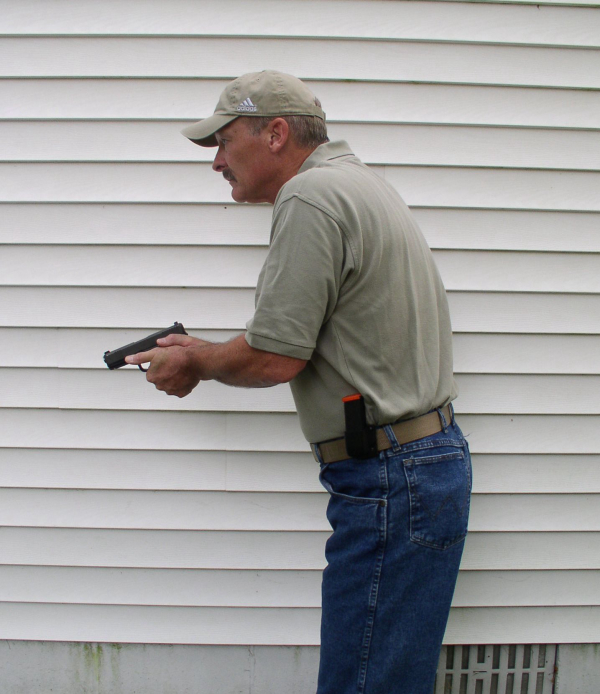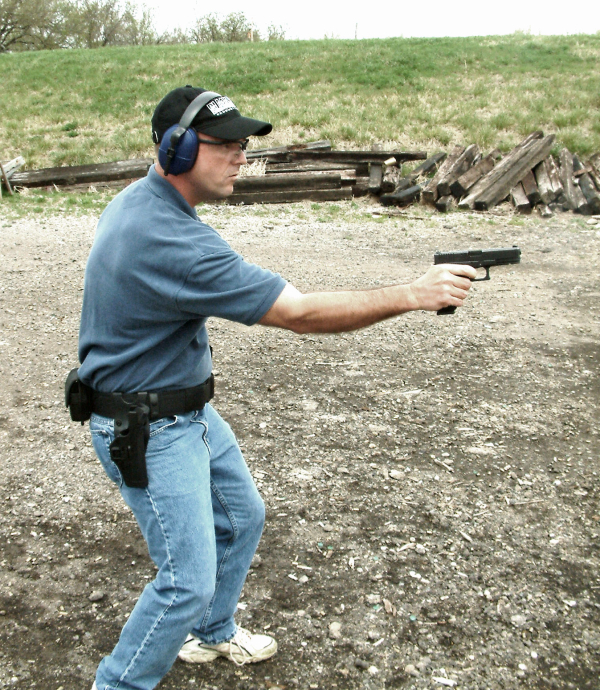
Today’s feature, from correspondent Dave Spaulding, continues from last week. In that part, Dave explained the appropriate level of force (reasonable), advanced the concept that “the old has become new,” and recommended the “Three S Test.” Now he explains the dynamic, training for it, and “simplicity.”
Guidance & Control
Any technique that will be used to save your life must be applied without a great deal of concentration and effort. In a situation that will last but a few seconds, there isn't time to observe, orient, decide and act. Many believe you must cycle through the entire loop, which isn't true. Boyd created the loop while training jet fighter pilots who may very well engage in the ultimate gunfights. They're traveling at speeds in the hundreds of miles per hour so it’s likely they will not be able to orient as it is classically taught.
These pilots must see and do, knowing what action they must take based on what is unfolding in front of them. According to Boyd's original diagram (it’s not really a loop as often shown), they're able to accomplish this through implicit guidance and control, which is the result of top-quality training. The best explanation of the OODA Concept I have heard comes from former Special Forces soldier and former lead instructor at the Roger’s Shooting School Claude Werner. Claude offers some fantastic information via his website. Check it out.
Few law enforcement agencies give officers enough training time to achieve this level of skill and I believe the same thing can be said for the armed citizen. Keep in mind there is never enough time to give the number of repetitions needed to truly anchor a skill in a 2/5-day training program. What instructors hope to achieve is a solid understanding of what is learned so the student can return home and practice the techniques to an anchor point. The training time given to fighter pilots, special operations troops and some full time SWAT teams allows them to see and do, the result of a huge commitment of time and money. How many times per year will you train? Are you willing to train on your own? After all, each and every one of us needs to be an active participant in our own rescue. Would you bet five bucks on a football team that you knew the quarterback had practiced with the ball 2 to 3 times that year?
Many of us who consider ourselves combative firearms enthusiasts have read about the training conducted for the British SOE and American OSS during WWII. Trainers like Fairbairn, Sykes and Applegate trained a large number of people to parachute behind enemy lines and conduct covert operations against the Germans and Japanese in America s first Shadow War. This training program is well-chronicled and it’s clear that they didn’t receive the amount of training time that is currently committed to today’s police cadets in the basic academy. The difference was that great pains were taken to eliminate anything that wasn’t needed and to keep what was taught straight-forward and simple. Again, simple is easy to teach, practice, master and maintain with minimal time and effort. Sometimes, less is more.

When discussing use-of-force skills (e.g., firearms, baton, knife, hand-to-hand, verbal skills), I view simplicity as “physiologically efficient.” Physiology deals with living organisms, and efficiency is defined as producing the desired result with the minimum of time, effort and energy. To me, this means using the living organism (human body) to accomplish a goal with the least amount of time, effort and energy possible by eliminating unnecessary motion. It is a term from track and field where proper technique is of critical importance.
Simple Isn't Always Better
Simplicity sounds like a great idea, right? The problem is that simple isn’t always minimal, at least as far as the use of force is applied. Example: Fighting techniques, such as face rakes, hammer fists to the nose, knees to the groin or spearing elbows to the chest, are all effective and simple to learn. The problem is they aren’t minimal in their application; they hurt people, and that is something many can’t tolerate, regardless of whether or not they are legally reasonable. Thus, we spend time and effort trying to learn complex techniques because they are less brutal in their appearance.
The Taser is a good example, an effective tool that’s now under fire because its use isn’t as “clean” as many thought it would be. Many thought it would be a nice way to disable someone: They’d be shot with the Taser, freeze and drop in place. What happens to a person’s head when they are suddenly incapacitated and gravity takes them to the ground? Yep, the head sounds like a cracking melon when it hits. Suddenly, the country is aghast at how “inhumane” it is. It’s not inhumane, it’s merely force, and the use of force will always be ugly, destructive, brutal and bloody. The best you can do is to make sure you are using it appropriately. Cool looking internet techniques might not meet this standard.
Too many instructors go off to a school and return to teach what they learned for no other reason than the course was fun and they learned some neat stuff. With so much on the line, there is no room for the trendy, only the proven. Proven techniques save lives, which is the primary goal of any training program. Because our training time and ammo is minimal, thus precious, we need to evaluate what we’re currently doing and ask, is this program really answering our needs or are we just teaching what appears to be “new?”
— Dave Spaulding
